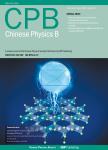K-P-Burgers equation in negative ion-rich relativistic dusty plasma including the effect of kinematic viscosity
K-P-Burgers equation in negative ion-rich relativistic dusty plasma including the effect of kinematic viscosity作者机构:Department of Mathematics Siksha ‘O' Anusandhan University Department of Applied Sciences Institute of Science and Technology Gauhati University Department of Mathematics R G Baruah College Physical Sciences Division Institute of Advanced Study in Science and TechnologyVigyan Path Paschim Boragaon
出 版 物:《Chinese Physics B》 (中国物理B(英文版))
年 卷 期:2016年第25卷第10期
页 面:215-221页
核心收录:
学科分类:07[理学] 0805[工学-材料科学与工程(可授工学、理学学位)] 070204[理学-等离子体物理] 0704[理学-天文学] 0702[理学-物理学]
主 题:K–P–Burgers equation negative ion relativistic plasma reductive perturbation method
摘 要:The stationary solution is obtained for the K–P–Burgers equation that describes the nonlinear propagations of dust ion acoustic waves in a multi-component, collisionless, un-magnetized relativistic dusty plasma consisting of electrons, positive and negative ions in the presence of charged massive dust grains. Here, the Kadomtsev–Petviashvili(K–P) equation, threedimensional(3D) Burgers equation, and K–P–Burgers equations are derived by using the reductive perturbation method including the effects of viscosity of plasma fluid, thermal energy, ion density, and ion temperature on the structure of a dust ion acoustic shock wave(DIASW). The K–P equation predictes the existences of stationary small amplitude solitary wave,whereas the K–P–Burgers equation in the weakly relativistic regime describes the evolution of shock-like structures in such a multi-ion dusty plasma.



